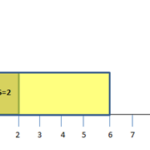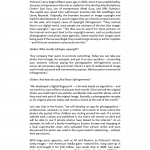Why Analytics is an Image Owner's Best Friend
We live in a digital age where we’re constantly surrounded by images. The question of how the brain responds to the daily barrage of imagery it absorbs, especially online, is a question which has consumed data analysts and researchers in recent years. The latest studies show that our brains can process an image in just a few milliseconds, and four times more efficiently than text. The findings are unambiguous: images are the best medium at engaging us. But with so many images constantly vying for our attention, how can you make sure yours stands out from the crowd? If only there were some objective rules that could ensure an image succeeds in getting the attention of its desired audience…

Netflix’s pioneering experiment reveals what images move us the most
These are musings that have preoccupied online film database, Netflix, who realized that there was much to gain from understanding how visitors interact with the visuals on their site. The results of Netflix’s study – published in a recent article on FastCompany.com – reveal that our brains do in fact absorb some types of imagery better than others and that systematically implementing the ‘right’ imagery could be immensely profitable. One of their conclusions is that movie thumbnails featuring 3 or less characters drive more engagement than thumbnails for the same film that feature more characters. In the latter situation, Netflix claim, our brains find it more difficult to focus and grasp the storyline. The adjustments Netflix have made as a result of their investigation to the visual content on their site have been crucial to growing their user-base. What’s more, their findings are relevant to anyone using visuals to market themselves online. The lesson is simple – data, if harnessed and analyzed sensitively, can be the key to a business’ growth.
Agencies and Photographers: why you can’t afford to ignore data
Photo agencies and photographers – whose very product is imagery – are an obvious example of the type of businesses that could benefit from data in the form of image usage insights. Most photo professionals are willing to admit they have little knowledge of this kind beyond the point of sale – they lack insight into how people engage with their content on their own site, let alone on the myriad websites, blogs and other social media platforms where their images wind up online. If these professionals were armed with data insights, such as the kind provided by PicScout Analytics, about how people interact with their images in the various places they are viewed around the world, they could make far more targeted and confident marketing moves – from determining the best sites to advertise certain content, to arranging their website in the most appealing way, to getting inspiration about what to shoot next. Regarding this last point, photographer-blogger Jim Pickerell states in a recent blog-post, “with falling prices serious producers can’t afford to waste time and money producing images for which there is no real demand…Much more focused planning based on data is required. If the data isn’t available, then planning is impossible.” Whilst other industries have been quick to summon data to inform their strategy, to date, few photo professionals have exploited the potential of data to bolster their business. In his recent post on the CEPIC News blog, Alfonso Guttierez, CEO of Age Fotostock and CEPIC President, urges photo agencies in particular to harness the power of big data, which, if thoughtfully applied, he says is “a valuable entity that may drive profitable activity”.
Click here to try out Insights for Everyone
Brands: why Image Analytics can make or break a campaign
But traditional content creators are not the only type of business that can profit from better image insights that PicScout provides. Brands too have much to gain from understanding the outreach of their image-based campaigns. In an age where visuals are key to driving consumer behavior, knowing what image will sell your product the best and to which audience often means the difference between a successful ad campaign that trends on the right blogs, and a costly flop. Likewise, finding out who is talking about your latest products or where your logo is being shown online, might inform you on which products to ‘push’ and where, and lead you to untapped markets.
Click here to try out Insights for Business

Context is key
The bottom line is that, for brands as much as for agencies, knowing which of your content is the most popular isn’t enough unless it’s accompanied by relevant contextual knowledge – where on a website an image is shown, the type of website it features on, where in the world it’s being viewed, etc. All these contextual factors have a bearing on whether someone engages with an image or not, and data reports that don’t take these factors into consideration are bound to give only a half-baked insight into content interaction. Guttierez is also quick to draw on this point, adding that “for data to mean something, it must be placed in context in the marketplace…otherwise, this data, if anything, will only be a sticky string of numbers”. And this is exactly what PicScout Analytics is all about: equipping image owners and users with contextualized usage insights to help companies make informed business choices.
Whilst there’s no formula for creating a successful image – if there was, there would be little need for talent or individual taste – having the relevant data about your images and their various audiences is an invaluable tool to inform creative choices, lending the supporting knowledge to make confident, calculated decisions in the marketplace.





